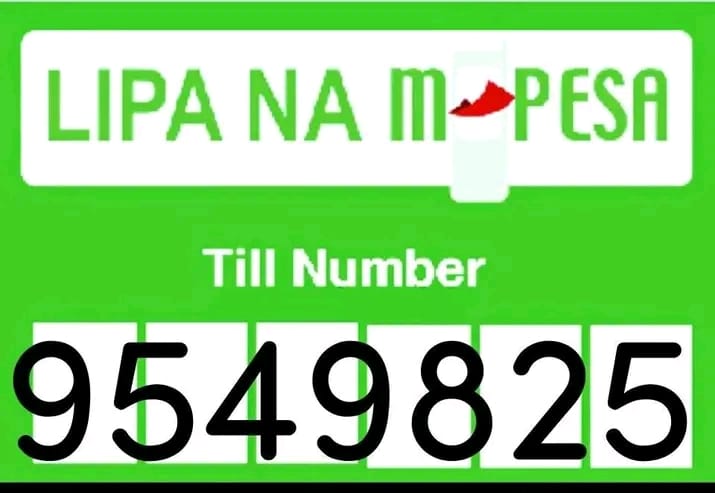
simply amazing, always for you.
When you’re in your 20s or 30s, retirement might seem like a concept reserved for your parents or grandparents—something distant, abstract, and far down the list of priorities. Between student loans, building a career, traveling the world, or starting a family, it’s easy to think you have plenty of time before retirement becomes a pressing concern.

But here’s the truth: retirement planning is not about age—it’s about timing. The earlier you begin, the greater your financial advantage. Whether you’re 22 and just starting your first job, or 35 and realizing you haven’t saved a dime yet, the best time to plan for retirement is right now.
This ultimate guide will take you through the what, why, and how of retirement planning in your 20s and 30s. We’ll demystify retirement accounts, explain investing basics, and arm you with strategies that can help you retire comfortably—even early—without compromising your current lifestyle.
Why Retirement Planning Should Start in Your 20s or 30s
1. The Power of Time and Compound Interest
Albert Einstein reportedly called compound interest the eighth wonder of the world. When you invest money, your returns begin to generate their own returns, creating a snowball effect that grows exponentially over time.
Consider this:
If you start investing $300 per month at age 25 with an average annual return of 7%, you’ll have over $760,000 by the time you’re 65.
If you wait until age 35 to start saving that same $300/month, you’ll end up with just over $365,000—less than half!
Time is the biggest advantage you’ll ever have in retirement planning.
2. Your Financial Obligations Are Typically Lower
In your 20s, you might not have a mortgage, children, or significant lifestyle costs. This is the perfect window to establish strong saving habits and funnel money toward investments while you have fewer financial responsibilities.
By your 30s, you may earn more, but obligations tend to grow too—so having started early can give you breathing room when life gets more expensive.

3. Building Long-Term Financial Discipline
Planning for retirement early teaches you crucial life skills:
- Budgeting and saving consistently
- Understanding investment vehicles
- Avoiding lifestyle inflation
- Setting long-term financial goals
These habits will serve you not just at retirement but every step of your financial journey.
How Much Should You Save for Retirement in Your 20s and 30s?
There’s no single formula, but here are some smart guidelines and targets.
Save at Least 15% of Your Gross Income
Financial advisors often recommend saving 10–20% of your pre-tax income, including employer matches. If you earn $50,000 annually, aim to save at least $7,500 per year.
Use the “25x Rule”
This rule of thumb suggests that you’ll need 25 times your annual expenses saved by retirement. So, if you estimate needing $50,000 per year, your retirement goal is $1.25 million.
Target Retirement Savings Benchmarks
Fidelity suggests these age-based goals:
- Age 30: Save 1x your salary
- Age 35: Save 2x your salary
- Age 40: Save 3x your salary
- Age 50: Save 6x your salary
- Age 60: Save 8x your salary
- Age 67: Save 10x your salary
These aren’t set in stone, but they provide helpful waypoints to measure progress.
Step-by-Step Retirement Planning in Your 20s
1. Build an Emergency Fund
Before investing, you need a financial cushion for emergencies—job loss, medical bills, car repairs.
- Aim for 3–6 months of living expenses
- Keep it in a high-yield savings account
- This ensures you won’t be forced to dip into retirement funds early
2. Contribute to Your 401(k), Especially If There’s a Match
If your employer offers a 401(k) or similar retirement plan, sign up immediately.
- Employer matches are free money (usually 3%–6%)
- Contributions are pre-tax, reducing your taxable income
- In 2025, you can contribute up to $23,000/year if under 50
Even if you can’t max it out, contribute enough to get the full employer match.
3. Open and Fund an IRA
If you don’t have access to a 401(k), or want to invest more, use an Individual Retirement Account (IRA):
- Roth IRA: You contribute after-tax money, but your withdrawals in retirement are tax-free.
- Traditional IRA: Contributions may be tax-deductible now, but withdrawals in retirement are taxed.
In 2025, you can contribute up to $7,000/year to an IRA if you’re under 50.
4. Invest in Low-Cost Index Funds
You don’t need to be a stock market wizard. In fact, keeping it simple is usually better.
- Index funds: Track major indexes like the S&P 500, offering diversification and low fees.
- ETFs (Exchange-Traded Funds): Similar to index funds but trade like stocks.
- Target-date funds: Automatically adjust risk based on your expected retirement year.
Fees matter. A 1% annual fee can cost you hundreds of thousands over your lifetime. Choose funds with expense ratios below 0.2% when possible.
5. Automate Your Contributions
Set up automatic transfers from your checking account to your retirement or investment accounts each month. Automation removes the temptation to skip a month and builds consistency.
Step-by-Step Retirement Planning in Your 30s
You might now be earning more, but also juggling new responsibilities—mortgages, kids, or debt. Here’s how to stay on track:
1. Increase Your Contributions
If you started with 10%, bump it to 15% or 20% as your income grows. Redirect raises, bonuses, or tax refunds into your retirement accounts.
2. Roll Over Old 401(k)s
If you’ve switched jobs, don’t leave money behind in old accounts.
- Roll over your 401(k) into a Traditional IRA or consolidate into your new employer’s plan.
- This simplifies tracking and potentially lowers fees.
3. Diversify Beyond Retirement Accounts
Consider additional investing options:
- Taxable brokerage accounts for added flexibility
- Real estate for rental income and appreciation
- HSAs (Health Savings Accounts) if eligible—offering triple tax advantages
4. Prioritize Debt Strategically
Focus on paying off high-interest debt (like credit cards), but don’t delay investing. You can balance both.
For example:
- Pay extra on a 19% credit card
- Make minimums on 3% student loans while investing in a 7% return portfolio
5. Get Life and Disability Insurance
If people depend on your income (partner, kids), protect them with:
- Term life insurance (affordable and effective)
- Disability insurance in case you’re unable to work
Understanding Key Retirement Accounts and Tools
Here’s a breakdown of your main retirement account options:
| Account | Tax Treatment | Contribution Limit (2025) | Best For |
|---|---|---|---|
| 401(k) | Pre-tax | $23,000 | Employees with matching employers |
| Roth IRA | After-tax (tax-free withdrawals) | $7,000 | Young earners in lower tax brackets |
| Traditional IRA | Pre-tax (taxed later) | $7,000 | High earners needing deductions |
| HSA | Pre-tax + tax-free growth and withdrawals (if used for medical) | $4,150 (individual) | Anyone with a high-deductible health plan |
| Brokerage Account | Taxable | No limit | Supplemental investing |
Common Retirement Planning Mistakes in Your 20s and 30s
Even the smartest people make missteps. Avoid these pitfalls:
Waiting Too Long to Start
Delaying by just a few years drastically reduces your ending balance.
Prioritizing Debt Over Investing Entirely
Yes, debt matters—but so does compounding. Balance both when possible.
Not Taking the Employer Match
If you skip the 401(k) match, you’re leaving thousands on the table.
Ignoring Fees and Fund Expenses
High fees eat away at returns. Choose low-cost index funds when possible.
Pulling Out Retirement Money Early
Withdrawing before age 59½ usually results in a 10% penalty and taxes. Only do this as a last resort.
Retirement Planning for Freelancers and Self-Employed
Don’t have an employer-sponsored 401(k)? You have options too:
1. Solo 401(k)
- For self-employed people
- Up to $66,000 total contribution (employee + employer portion)
- Can include Roth contributions
2. SEP IRA
- Simplified Employee Pension
- Easier to manage, but all contributions are pre-tax
3. Roth IRA or Traditional IRA
These are still available even if you’re self-employed.
Smart Habits That Set You Up for Retirement Success
Automate Everything
From investing to bill payments—automation builds discipline and consistency.
Increase Contributions Yearly
Start with 10%, then go up 1–2% each year until you hit 20%.
Check In Twice a Year
Review your accounts, adjust contributions, and rebalance if needed.
Keep Investing During Market Dips
It’s tempting to stop during a downturn—but that’s when you buy assets on sale.
Avoid Lifestyle Creep
As your income rises, don’t increase your spending proportionally. Save or invest the difference.
What If You’re Behind? How to Catch Up
Many people don’t start until their 30s—and that’s still okay. You can make up for lost time:
- Max out your 401(k) and IRA
- Cut unnecessary expenses
- Boost your income through upskilling or side gigs
- Delay big purchases
- Consider working a few more years if needed
Remember: It’s never too late to start.
Helpful Retirement Tools and Resources
- Mint / YNAB – Budgeting
- Fidelity / Schwab / Vanguard – Investing platforms
- Personal Capital / Empower – Retirement and net worth tracking
- SmartAsset – Retirement calculators
- IRS.gov – Official limits and rules for tax-advantaged accounts
Start Now, Enjoy Later
The most important retirement advice you’ll ever hear?
Start early, stay consistent, and let time do the heavy lifting.
Planning for retirement in your 20s and 30s doesn’t mean giving up your lifestyle or being miserly. It’s about making smart choices that balance your present and future. It’s about having options later—whether that’s retiring early, traveling the world, or working on your own terms.
Every dollar you save and invest today isn’t just about money—it’s a promise to your future self that you’ll be free, independent, and in control when the time comes.

Support Our Website!
We appreciate your visit and hope you find our content valuable. If you’d like to support us further, please consider contributing through the TILL NUMBER: 9549825. Your support helps us keep delivering great content!
If you’d like to support Nabado from outside Kenya, we invite you to send your contributions through trusted third-party services such as Remitly, SendWave, or WorldRemit. These platforms are reliable and convenient for international money transfers.
Please use the following details when sending your support:
Phone Number: +254701838999
Recipient Name: Peterson Getuma Okemwa
We sincerely appreciate your generosity and support. Thank you for being part of this journey!
